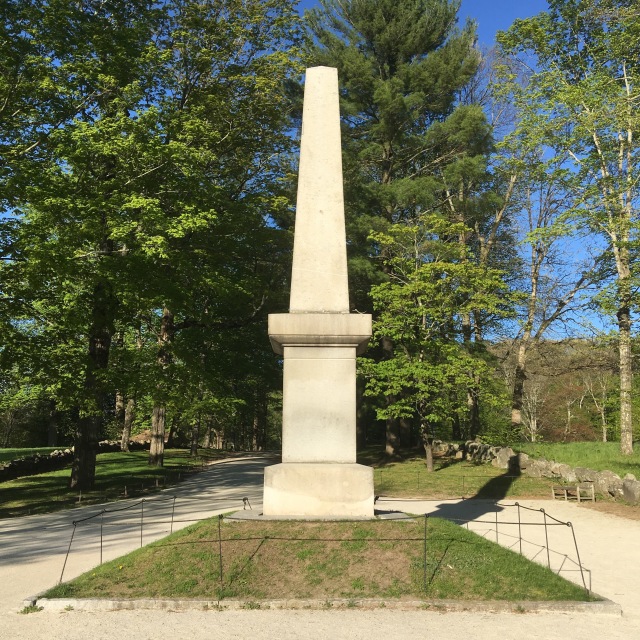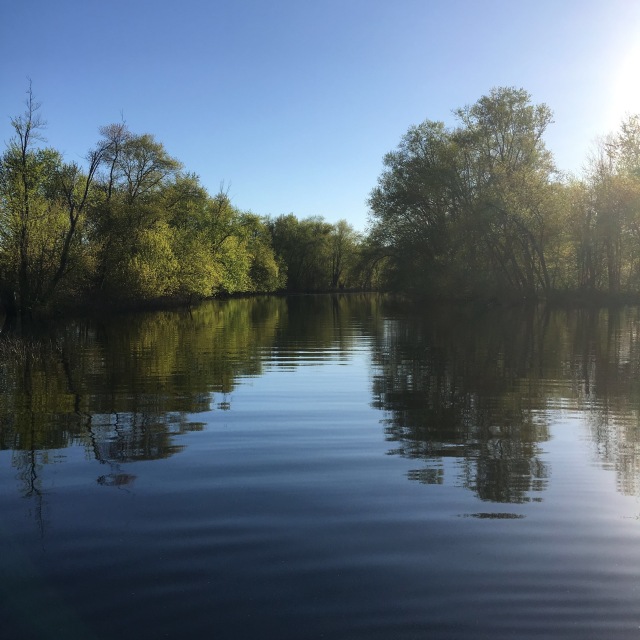“You want to go for a ride?”
Sounded like a good idea to me. My wife and I had just left dinner at the local Italian restaurant, but it was still early, the sun was out and the weather was pleasant. The alternative would have been to just go home, and that would have been a waste.
I had no idea until she then asked, “Have you ever been to Old North Bridge?”
I had not.

She thinks it may be apocryphal among people in her line of work, but my wife likes to tell the story about the person who either commented or asked a question about how so many battles were fought in national parks.
On a random Saturday evening in May, Minute Man National Historical Park, site of the Old North Bridge (actually a replica) doesn’t look like one of the first battles of the American Revolution had been fought there.

There are a few markers — the monuments on either side of the bridge, the British soldiers’ grave, the sign on the walkway leading to The Old Manse that the occupant could have watched the battle out the upstairs window — but otherwise it’s a pleasant place to walk around, to rest on a bench, to watch a pair of geese tend to their little ones.

On the bridge itself, several girls were trying to set up the proper group and individual shots, because sometimes, the national parks where the battles took place are in extremely scenic locations.

As you might guess, the Patriots’ Day holiday April 15 and the actual anniversary of the battles in Lexington and Concord are kind of a big deal around here. There are parades and events for several days in those two towns and the towns surrounding.
Local re-enactors put on their Colonial or British uniforms and march in parades. My buddy Mix was photographed and on the cover of a local newspaper the day of his company’s march.
Where I live in Acton, the Faulkner House, where Major Francis Faulkner gave the signal for local forces to muster by firing three shots, is right down the hill from my house. We walk or drive past it all the time.
This seminal moment in American history … all within a short walk or drive from my house.
“Although he is less interested in making an argument than telling a story, the story he tells is designed to rescue the American Revolution from the sentimental stereotypes and bring it to life as an ugly, savage, often barbaric war. Unlike in World War II, most of the killing occurred up close. Advancing troops could literally see the whites of the eyes on the other side, as well as hear horses and men dying in agony.“
— Joseph Ellis, “Rick Atkinson’s Savage American Revolution,” The New York Times
My birthday is at the end of the month, and so I was in a local bookstore the other day to see if there was anything new to put on my list.
As soon as I walked in, there it was, Rick Atkinson’s “The British Are Coming,” the first of a trilogy of books he plans to write on the American Revolution. His Liberation Trilogy on World War II is incredible, so needless to say, “The British Are Coming” went on the list.
When I read about World War II, I wonder, especially at the beginning, how the Allies ever won, and how anyone came back home alive and able to function.
When I think about the American Revolution, I marvel at how 13 colonies got the idea that they could tell the most-powerful nation on Earth at the time to go pound sand … and they won.
Sure, there was no small amount of help from the French, but not at the beginning. I can’t wait to read Atkinson’s account of the war, particularly those early days.







Pingback: Celebrating pools, celebrating America – A Silly Place